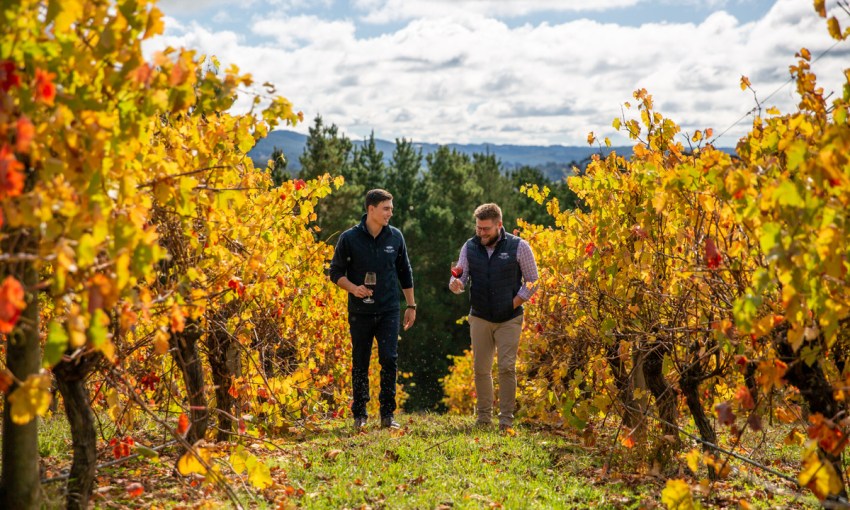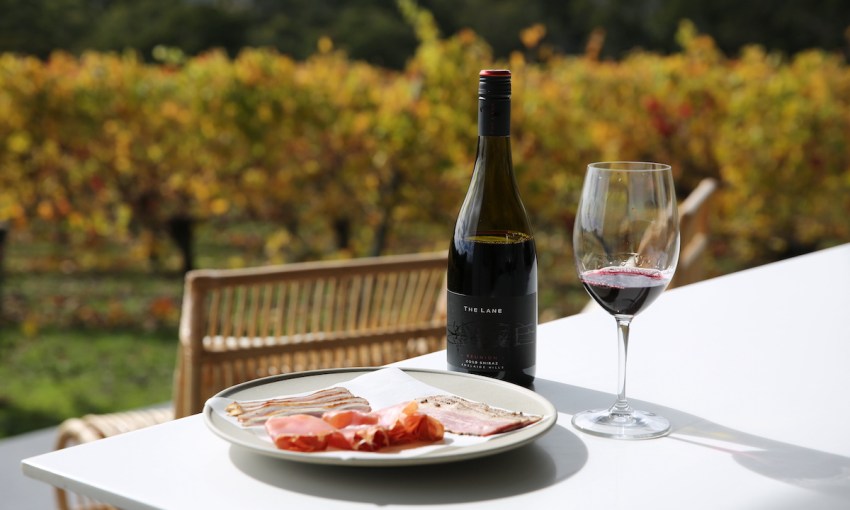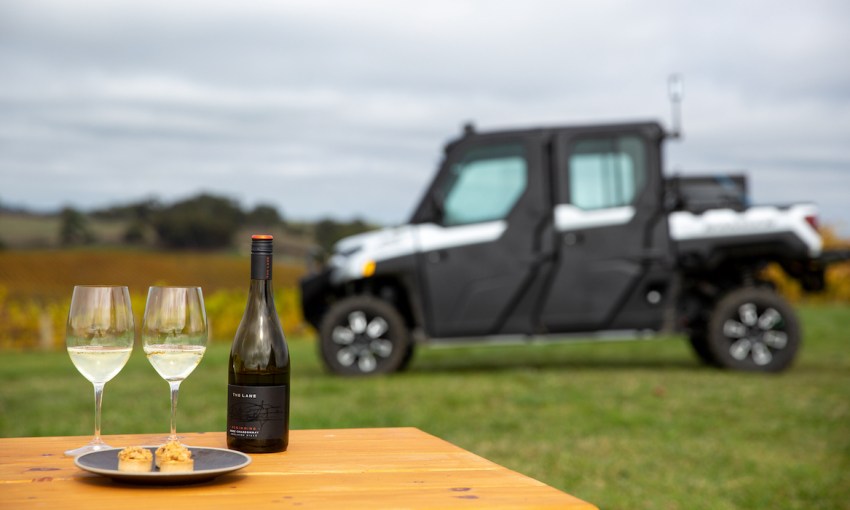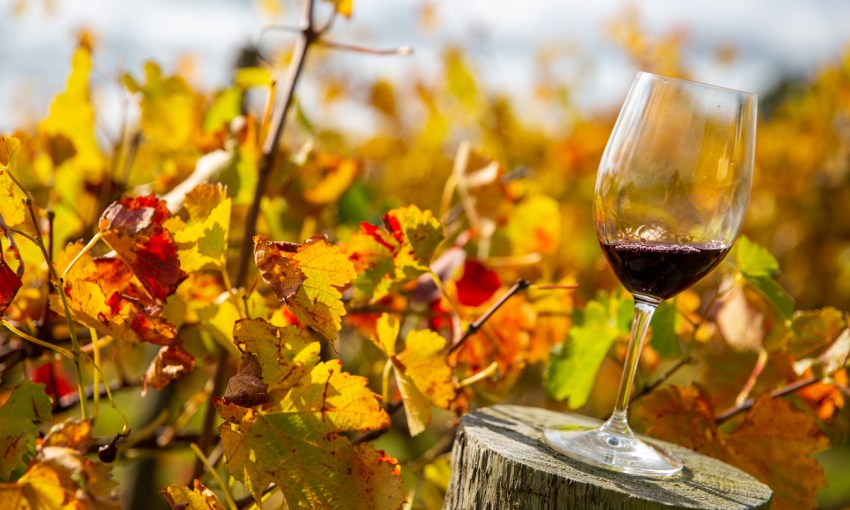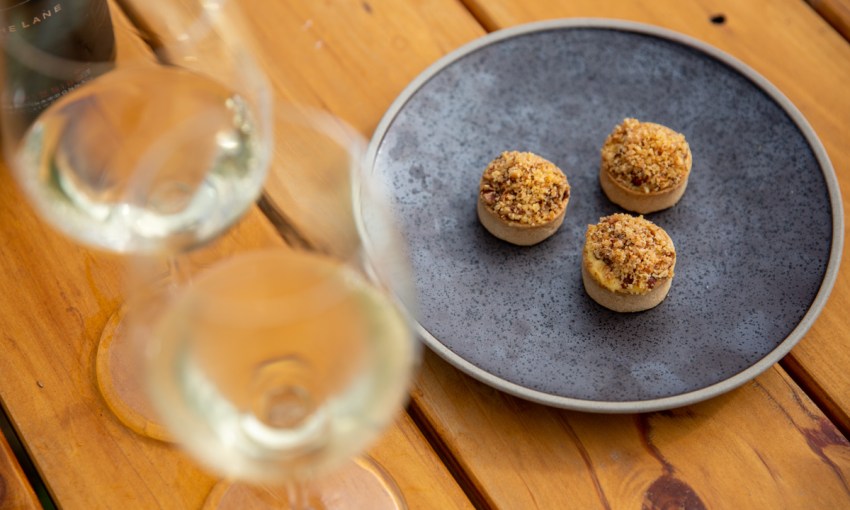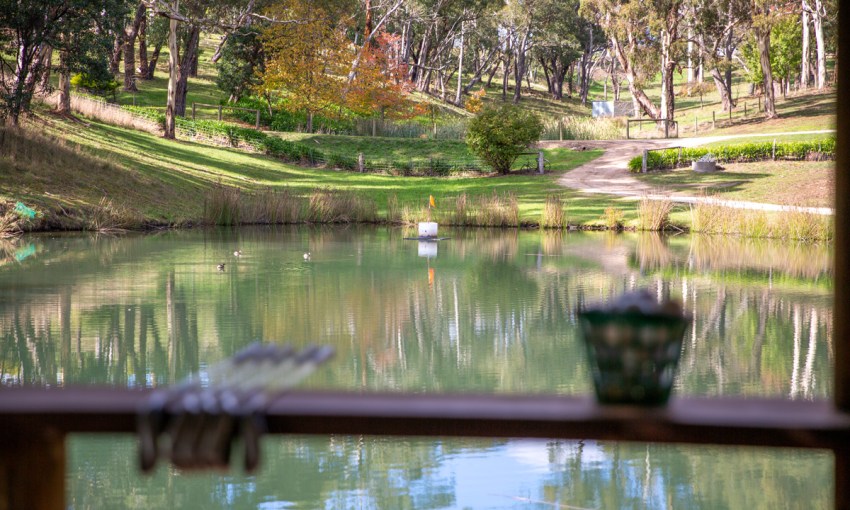SALIFE tags along with The Lane Vineyard's Jared Stringer and Turon White to sample their new “roving degustation” off-road tour while learning about soon-to-be-built luxury villas, a huge new kitchen garden, nebbiolo and trout fishing.
Adelaide Hills vineyard turns over a new leaf
There’s a grassy clearing atop the highest point of The Lane Vineyard; a hilltop situated between two of the producer’s best vineyards which are planted to shiraz and chardonnay.
Here, 460 metres above sea level in the Adelaide Hills, there is simply a humble picnic table and sweeping views to Mount Torrens in one direction and Mount Lofty, the other.
Private helicopters often touch down at this secluded lookout.
“We had one yesterday; a woman in a private chopper landed for lunch. We get quite a few of those,” says The Lane CEO and vigneron Jared Stringer.
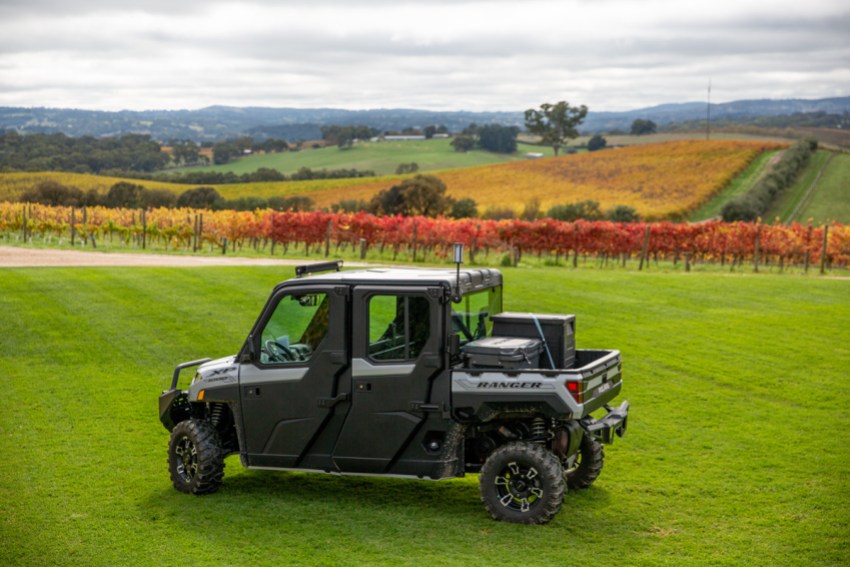
We’re not riding in a chopper today, but a gnarly all-terrain vehicle (ATV).
The Lane recently imported the ATV from America specifically for a new food and wine experience that takes guests out of the cellar door and into the vines.
Up to four people can book the experience, which pairs single-vineyard wines with chef-made amuse-bouche (French for ‘mouth amuser’) to be enjoyed at different locations around the estate, next to where the grapes of the same wines are grown.
Guests are hosted by either Jared or head winemaker Turon White but today, SALIFE is lucky to have both on hand for an exclusive tour.
The estate’s vineyards occupy some precipitous slopes that heavy four-wheel-drives can struggle with, but the ATV’s suspension makes light work of the muddy inclines.
As we embark down a dirt road away from The Lane’s cellar door, Jared points out an empty block of dark, rich-looking soil next to the restaurant.
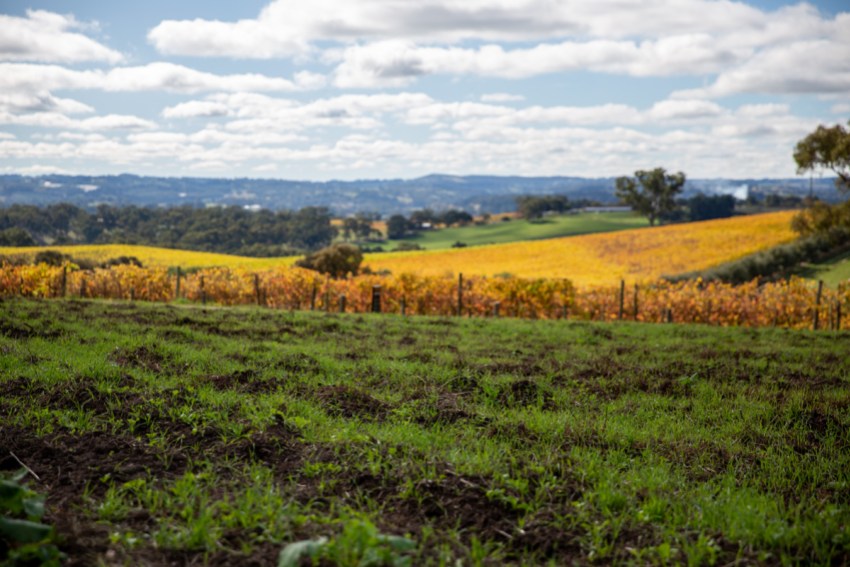
This block was planted with cabernet sauvignon up until last year when it was ripped out to make way for an enormous kitchen garden.
“It’s not going to be permaculture, but it will be close to it, and there’ll be chickens and bees, a glass house for propagating and composting of our green waste and the grape marc from the winery – so it’s going to be the ultimate paddock-to-plate setup,” says Jared.
It’s estimated the garden will produce 80 per cent of food used in the kitchen; a significant evolution for the award-winning restaurant which is led by head chef Tom Robinson.
The other half of this block has been planted to nebbiolo and cabernet franc – two varietals Turon is excited about.
The winemaker believes the Hills is the best place to grow the northern Italian varietal outside of Piedmont.
While the cabernet struggled in cooler growing seasons, the nebbiolo and cab franc should thrive; the new vines are already well established.
“Our first estate-grown nebbiolo will be released in 2025 and it’s a very exciting variety for us to be moving into,” says Turon.
“We have another site where we’ve been growing cabernet franc for the better part of 10 years and that vineyard produces some of our most awarded wines. That’s why we’ve decided to plant more of that here, too.”
Next in the firing line is The Lane’s block of merlot. Another fruit that is not best suited to the terroir, the merlot will be ripped out later this year.
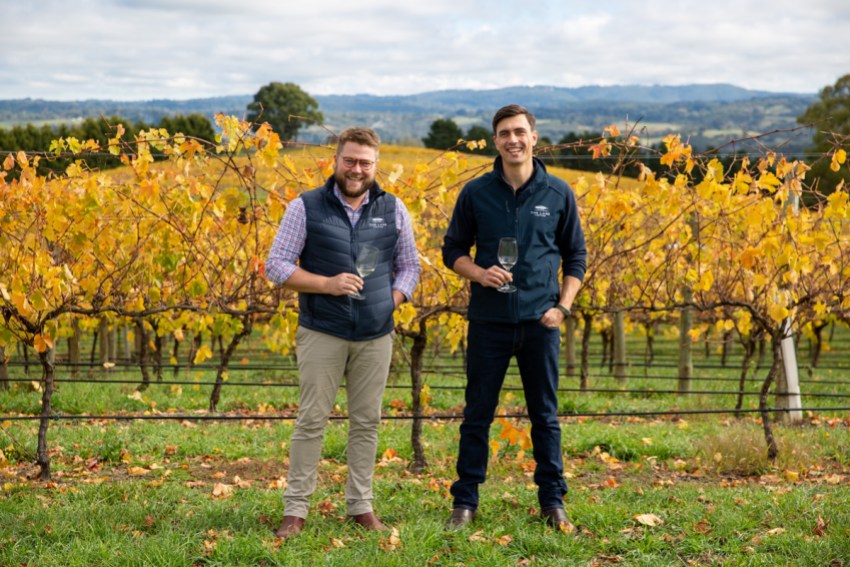
“The Lane was planted in 1993, so we’re in our 30th year,” says Jared.
“The Adelaide Hills is one of the youngest regions in the country … but they planted what they knew, not necessarily what was going to grow best.
“Covid gave us an opportunity to reflect, and we’ve carefully planned out what should be grown here.
“It gave us time to reflect on the winemaking, the restaurant, the vineyard and look to the future. While it was incredibly disruptive, it brought about change for the better.”
As the ATV ratchets up a steep incline towards the highest point of the property, the soil transitions to bony shale.
Jared explains that the shiraz thrives here in this rocky hilltop location which gets plenty of sunlight.
“When you can plant shiraz in a site like this, it grows much better-quality fruit,” says Jared.
“This property has many different microclimates and these shaley rocky soils are perfect for shiraz because it is such a prolific variety.”
We round a corner and reach the first stop of the tour – the elevated hilltop clearing where a humble picnic table awaits.
“Often you come here in the morning and everything’s white around you; it’s like you’re above the clouds because the heavier frost tends to settle below us in the lower sites,” says Turon.
“It makes this such a great spot for growing grapes.”
Turon sets down a plate of Gazander oysters from the Eyre Peninsula, onto which he adds a splash of the 2019 Estate Cuvée Blanc de Blancs.
Made with chardonnay handpicked from vines in our immediate proximity, the Blanc de Blancs makes the oysters sing.
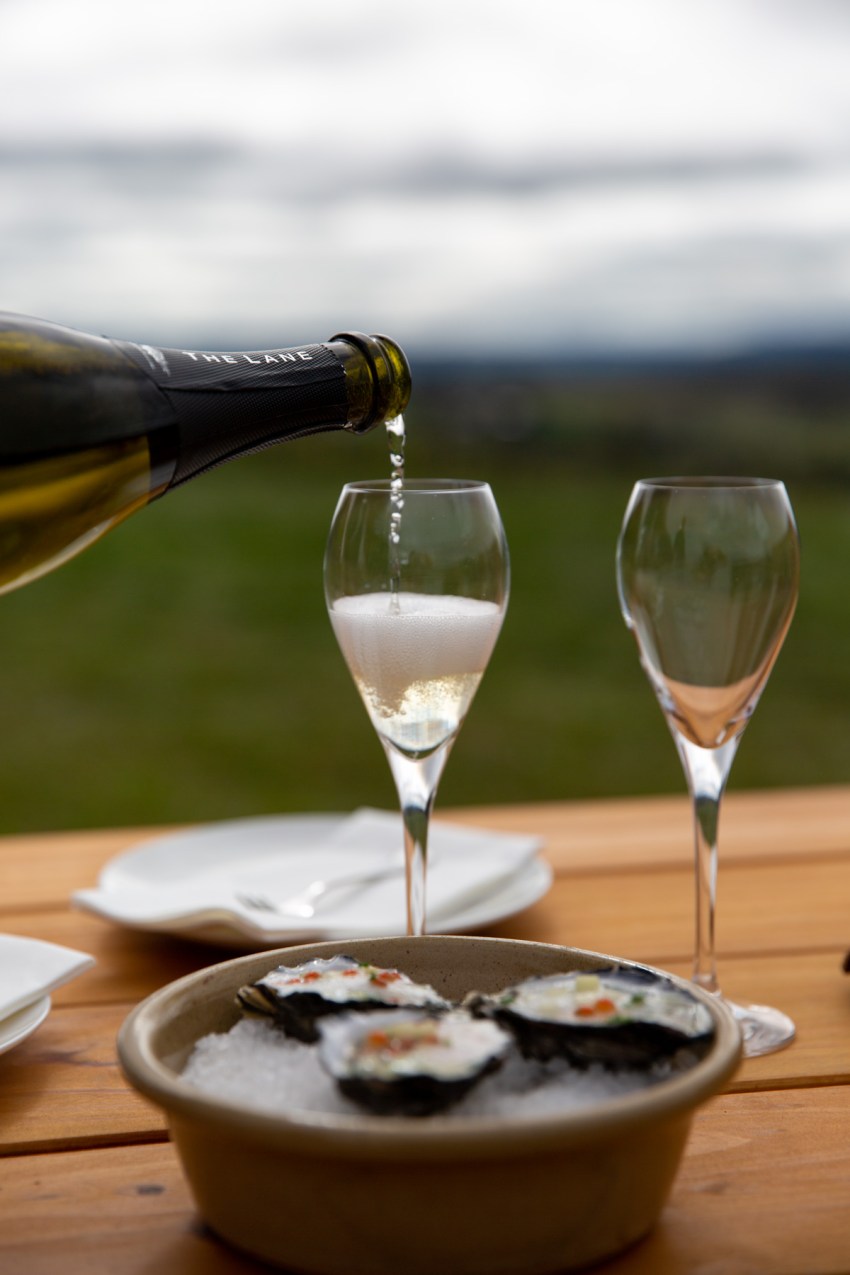
This sparkling wine takes years to prepare, from being handpicked to then whole bunch pressed and fermented in barrel for nine months before blending and then undergoing a second ferment in-bottle.
“There’s really no way to cut the corners on this sort of this level of sparkling,” says Turon.
“This has had about three-and-a-half years in the bottle with the yeast, so you start off with a base wine that’s very citrusy and then you’re building all those beautiful creamy cashew, brioche-type characters into the wine.”
The next pairing is the 2022 Beginning Chardonnay, “an absolutely cracking vintage”, with Section 28 Monforte cheese tarts.
“This one’s exquisitely balanced and it’s got everything in spades,” says Turon.
The pairing – chardonnay with aged cheese whipped into a custard-like consistency with truffle and mushroom crumb – is sublime.
“Wow, I haven’t had this one before,” says Turon after sampling the tarte. “That is really good.
“Chardonnay is easily my favourite wine variety. With chardonnay it’s very important to make a wine that’s bright but also textural and delicious,” he says.
The Lane’s single vineyard chardonnay is stirred in-barrel. It’s labour-intensive but is worth the effort for the texture and body it gives to the wine.
“We’re always looking for freshness and crispness and minerality. As a winemaker, I love it because you can express yourself through the wine,” says Turon.
“This crisp, modern Australian style of chardonnay is having a bit of a re-emergence which is exciting.”
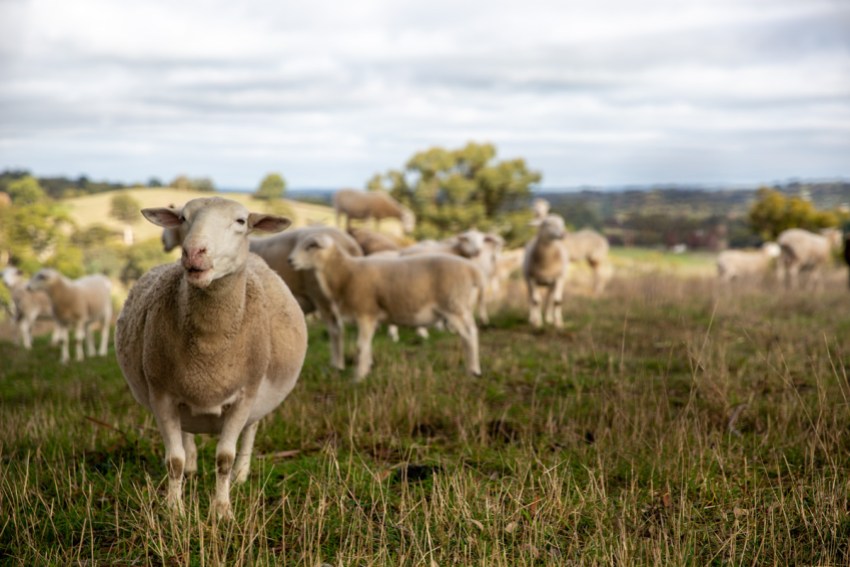
It’s back in the ATV to traverse the hilly vineyards to the next stop on the tour – another hilltop – where a mob of sheep are tucking into hay on a vacant paddock.
By the end of 2024, this empty site will be home to The Lane’s new multi-million-dollar luxury accommodation offering of 20 high-end villas.
We enter a nearby tasting hut that is bathed in warm autumn sunlight and provides northern views straight down rows of shiraz.
“This is a very special block, and just a killer view as well,” says Turon.
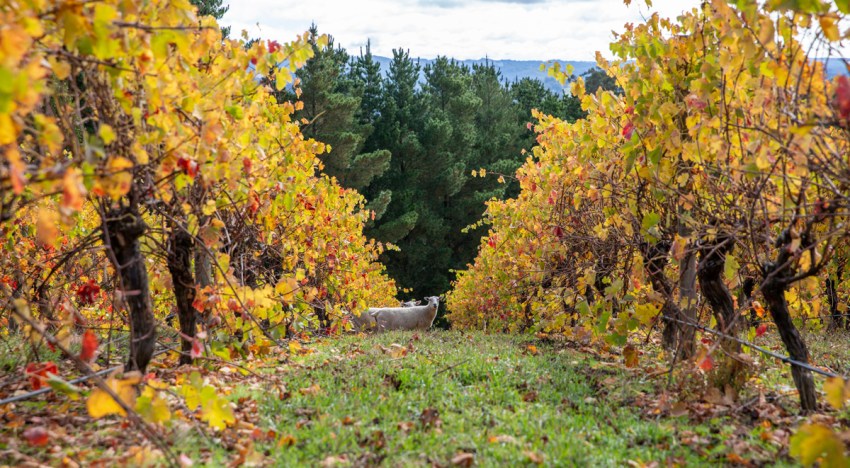
For this stop, the 2019 Reunion Shiraz is paired with house-made charcuterie which includes duck ham cured in-house, pastrami from the estate-raised lambs (apologies to the sheep grazing nearby), and San José prosciutto.
The tasting hut is one of several picnic spots dotted across the estate.
“One of the things we did during the pandemic was open up our estate,” says Jared.
“People can now pre-book a picnic, pick up a basket full of fresh produce and bottle of wine from our cellar door, with a map of picnic spots across the estate. We do get a lot of proposals up here.”
As the sheep graze in-between the rows of shiraz directly in front of the hut, Turon explains the sustainable principles behind viticulture at The Lane.
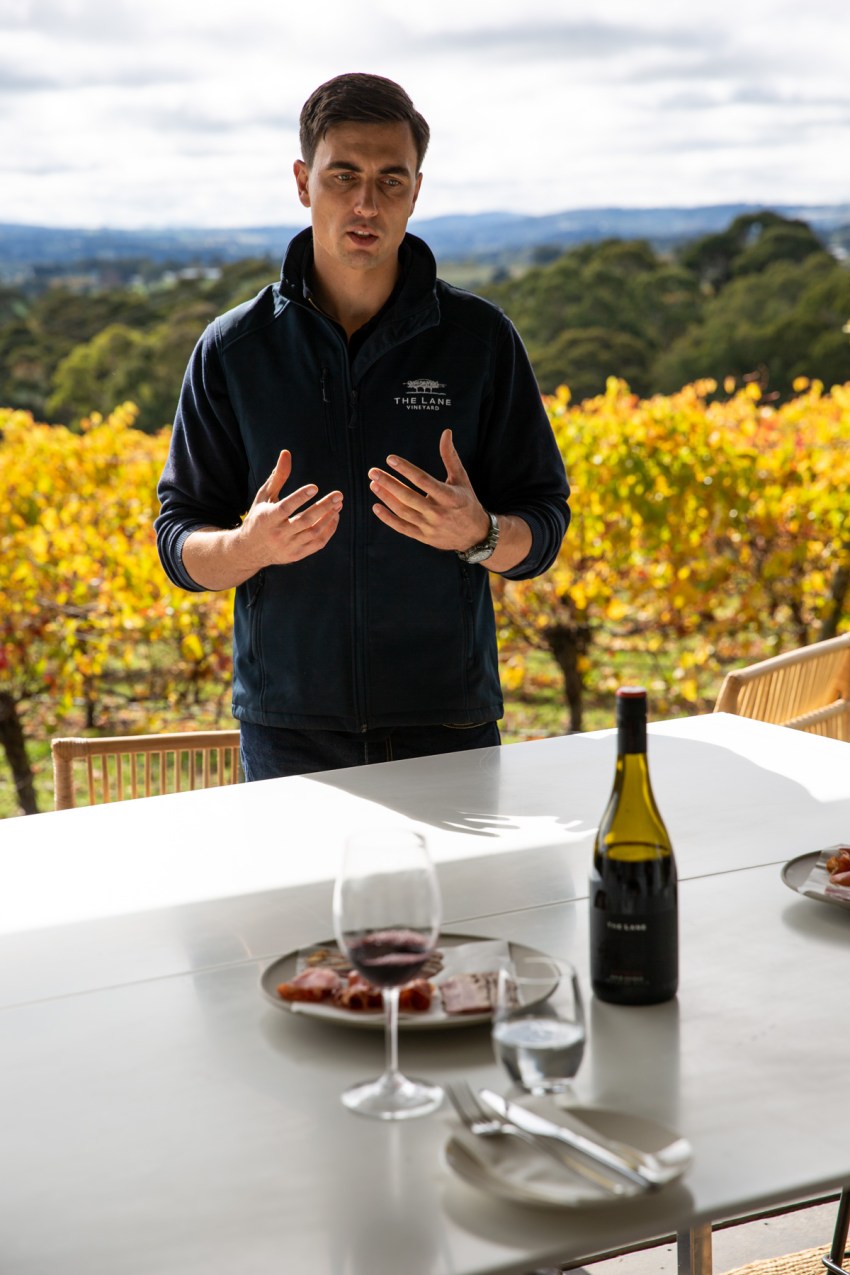
Turon – having previously worked vintages at the Hills’ iconic biodynamic producer Ngeringa – has a great appreciation for biodynamic farming.
Some of those principles are adopted at The Lane and, while its vineyards are not certified organic or biodynamic, Turon believes that certification is not always best practice for every vineyard.
“I love the principles, but I’d love to do 80 per cent of what they do,” he says.
“In terms of sustainability, there’s not a one-size fits all solution for growing grapes. Being able to modify it to suit your vineyards and your practices is a better approach for us.”
The Lane now uses sheep, instead of tractors, to slash the vineyards.
The sheep eat the grape marc from the winery, fertilise the land, and the lambs are used in the restaurant.
We could sit here all day in the sun, basking in the views, but it’s back in the ATV to head to another picnic spot next to semillon vines in a small valley.
For this stop, it’s a pour of the 2022 Sauvignon Blanc Semillon paired with KIN bluefin tuna, avocado, puffed rice and citrus.
“This wine has excellent tension. It’s very electric and alive,” says Turon.
“It’s been a staple of The Lane for nearly 30 years and features on wine lists because it matches so well with food, being quite a fruit-driven, textural aromatic white, but still with body, as opposed to a straight sauvignon.”
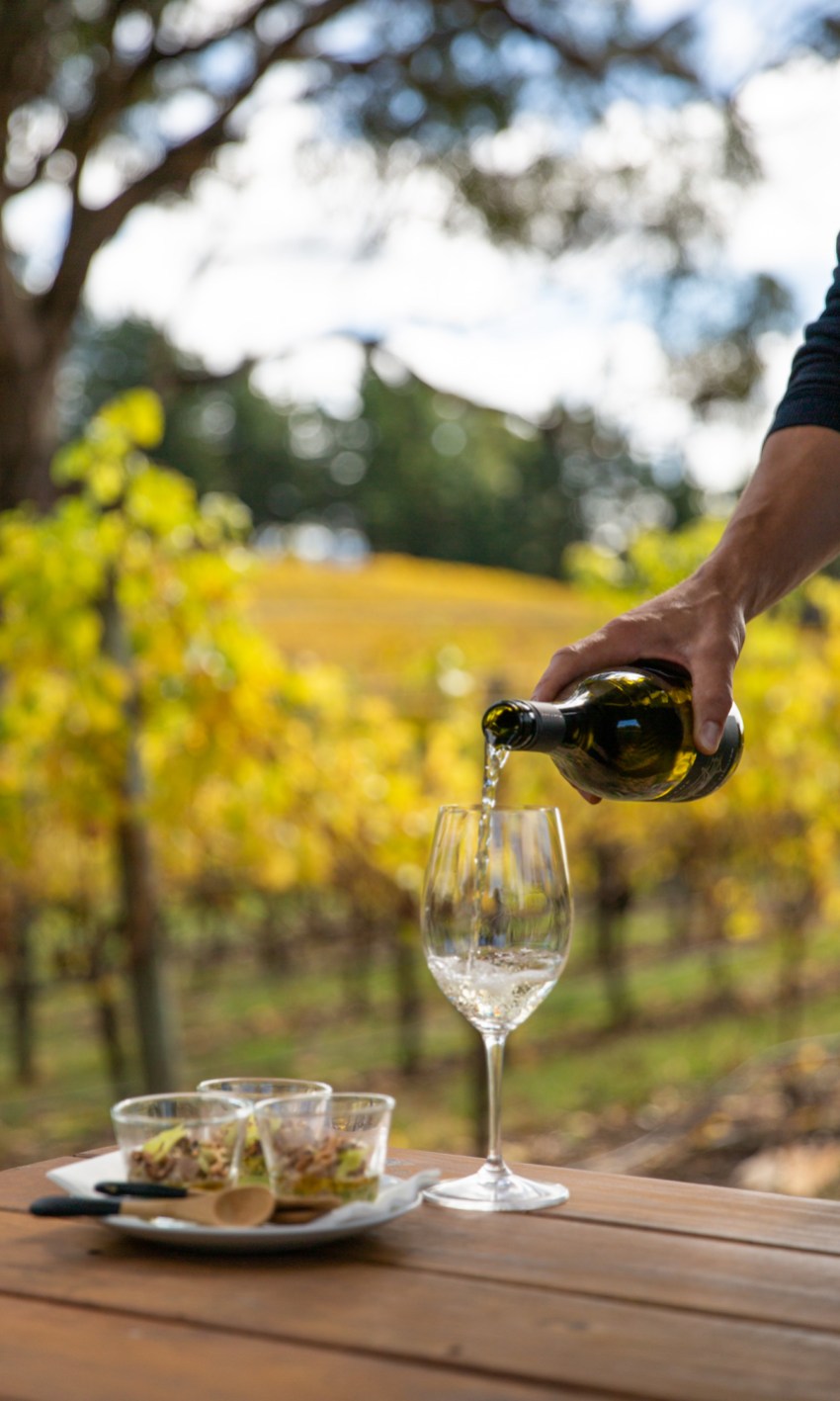
“The purpose of this experience is to get people outside of the tasting room,” says Jared. “How much more fun is it to be out here where you can really get a sense of what grows where?”
The last stop on this roving degustation tour is The Lane’s dam and boatshed where guests can tee off towards a target floating 30 metres away.
The Lane offers a premium trout fishing experience here with rods, a decadent lakeside brunch and refreshments included.
The final wine of today’s tour is the 19th Meeting Single Vineyard Cabernet Sauvignon 2017, paired with a cheese board.
While Jared takes aim with an iron, Turon explains that the 2022 edition will be The Lane’s final estate-grown cab sav.
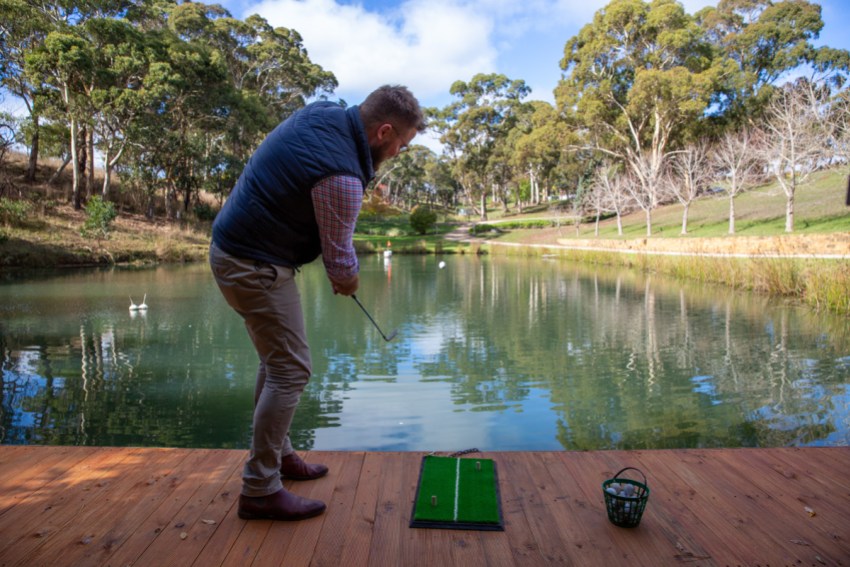
“The Adelaide Hills is such a broad church in terms of mesoclimates and the huge amount of varieties can be grown well here, so it’s about finding what works well for your site,” says Jared.
While Turon and Jared are overseeing major changes at The Lane, some of their closest neighbours at Balhannah have also opened grand new cellar door facilities, heralding a new era for this Adelaide Hills sub-region.
“We’ve got a great asset here – one of the jewels of the Adelaide Hills – and we want to keep innovating and making sure we’re leaving it in a better spot for generations to come.”



